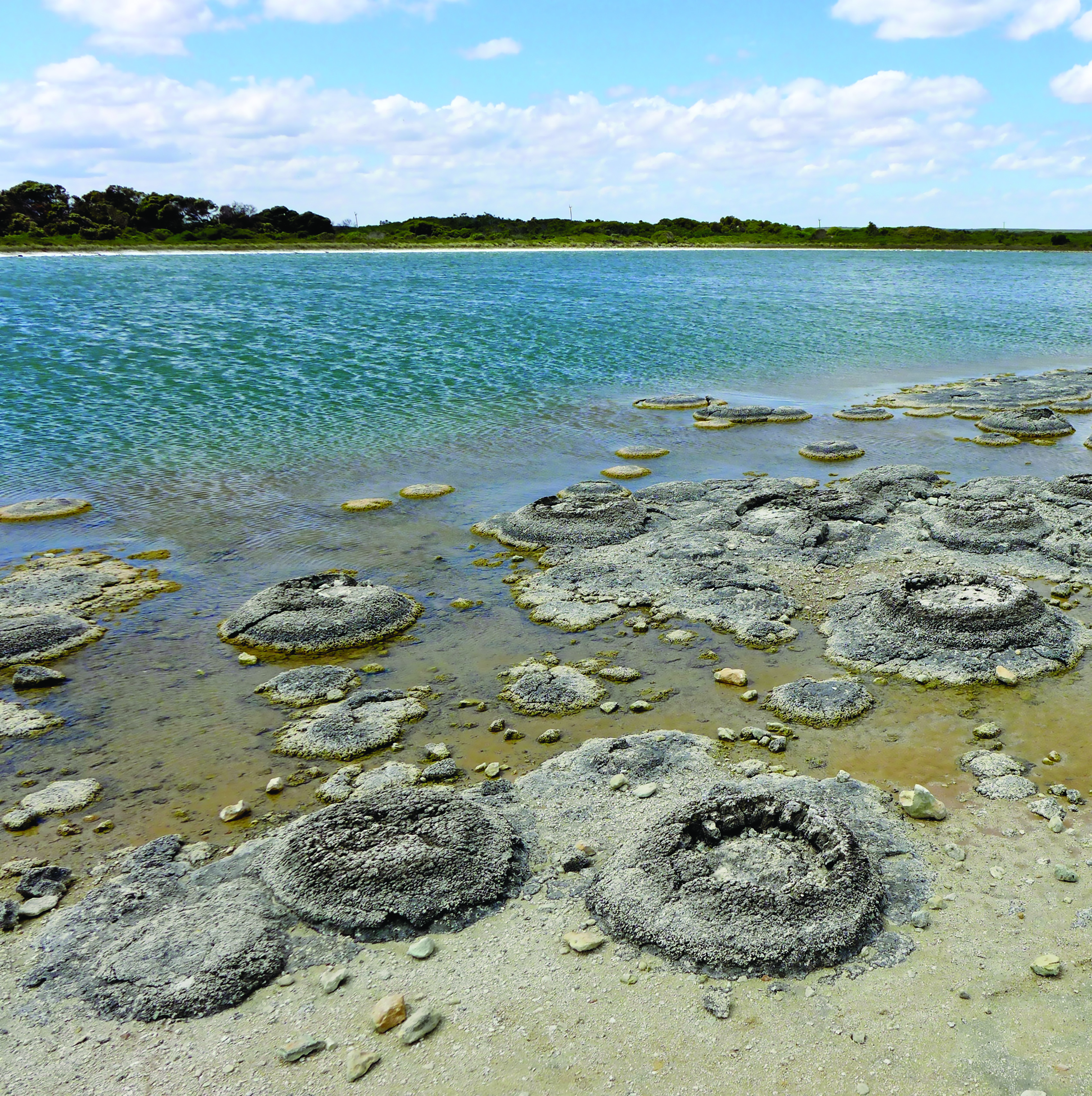
Learning Outcomes
These indicate what you should understand and be able to do as a result of the section. Each Learning Outcome highlights one main practice of science or engineering that you will use to investigate and explore ideas of Earth and space sciences and key crosscutting concepts that are common among all the sciences.
Section 1: The Evolution of the Geosphere
- Analyze and interpret data to determine the distribution and age of Earth’s geologic provinces.
- Analyze and interpret data to determine the age distribution of the basement rocks of the North American continent.
- Obtain information about the formation and development of Earth’s geosphere.
Section 2: The Evolution of the Fluid Spheres
- Develop and use a model to explain the release of gases from Earth's mantle into the atmosphere.
- Obtain information about how Earth's fluid spheres formed and have changed through time.
Section 3: The Origin of Life on Earth
- Use a model to evaluate a hypothesis about how life may have originated on Earth.
- Carry out an investigation that examines the development of compounds necessary for life on Earth.
- Carry out an investigation that examines the evidence of the oldest forms of life on Earth.
- Carry out an investigation that compares ancient microscopic organisms with modern ones.
Section 4: The Biosphere and the Evolution of the Atmosphere
- Carry out an investigation to explain how iron reacts with oxygen in a solution.
- Carry out an investigation that examines the evidence for the iron-oxidizing conditions of Earth’s early oceans.
- Analyze and interpret data to explain changes in the volume of oxygen dissolved in the global ocean over time.
- Obtain and evaluate information about the role of early life forms in the evolution of the atmosphere.
- Develop a model of geologic time using a number of major events in Earth's history.
- Use mathematics to explore the geologic time scale and teh use of the biosphere to divide geologic time.
- Use a model to explain how radioactive decay can be used to determine the age of a rock.
- Use a model that illustrates the fossil-forming process.
- Carry out an investigation of organisms in your community that are most likely to become preserved in the fossil record.
- Obtain information about fossil-forming environments.
- Use a model to explain how natural selection favors the best-adapted organism in a population.
- Use a model that demonstrates how fossils can be used to determine rates of evolutionary change.
- Use a model that demonstrates how sequences of fossils can be used to date fossil specimens.
Section 8: North American Biomes
- Carry out an investigation of the major biomes of North America.
- Analyze data on a map of North American biomes.
- Obtain information about the factors that determine the distribution of biomes on Earth.
- Carry out an investigation that examines changes in Earth’s climate and biosphere 65 million years ago.
- Carry out an investigation that compares the body structures of modern organisms to extinct organisms.
- Obtain information about how catastrophic events in Earth’s history have resulted in mass extinctions.
